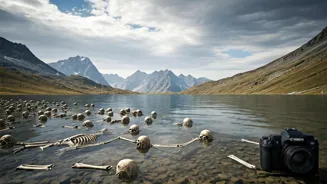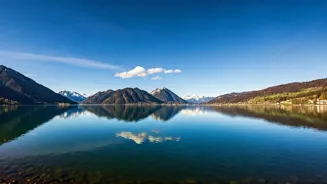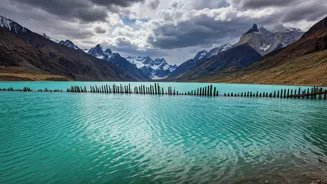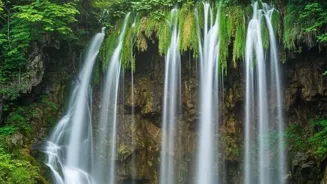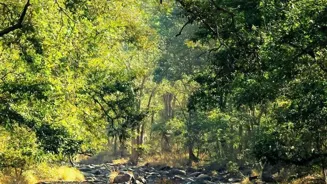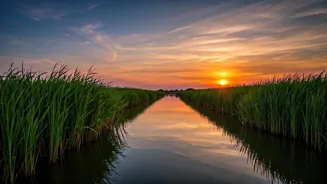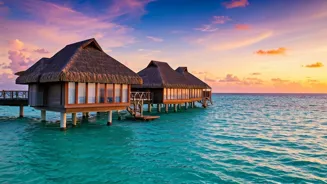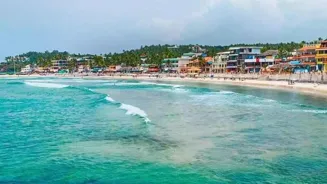The Skeleton Lake
Roopkund Lake, a high-altitude glacial lake in Uttarakhand, is commonly referred to as the Skeleton Lake. What makes this lake particularly intriguing
is the presence of hundreds of human skeletons that can be seen at the bottom of the lake when the ice melts. Theories about the origin of these skeletons vary, ranging from an ancient Indian king and his entourage to victims of a sudden natural disaster. The mystery surrounding the skeletons has captivated researchers and explorers for decades, with ongoing attempts to unravel the truth behind their presence. Various studies and investigations have been conducted, each attempting to understand the context and origins of these skeletal remains. Despite the efforts, the true story continues to elude definitive resolution, making the lake a haunting reminder of the unknown past.
Magnetic Hill's Puzzle
Located near Leh in Ladakh, the Magnetic Hill defies conventional understanding of physics, seeming to pull vehicles uphill. This optical illusion creates the impression that cars can roll uphill on their own, defying gravity. The phenomenon has fascinated many travelers and locals, leading to numerous theories and speculation. One common explanation is that the surrounding terrain and the positioning of the roads create an optical illusion, making the downward slope appear uphill. Others suggest it has to do with magnetic properties. Despite the ongoing debate and many explorations, the exact reason behind the Magnetic Hill's illusion remains unclear, adding to its allure. It's a stop-off for many visitors who find themselves charmed by the strange experience.
Jatinga's Avian Suicides
In the village of Jatinga in Assam, a bizarre event occurs annually: hundreds of birds, primarily migratory species, inexplicably plummet to their deaths. The event typically happens during the monsoon months, between September and October, and occurs during late evenings. Scientists have theorized about many reasons, including unique atmospheric conditions during the late hours, high altitudes, and the direction of winds, but a conclusive explanation for this unexplained phenomenon has not been found. The birds appear to be disoriented, and their strange behavior continues to perplex ornithologists and locals. The mystery surrounding the birds' deaths has made Jatinga a significant area for research. The ongoing investigation seeks to unveil the forces behind this unusual behavior, adding a sense of mystery.
Karni Mata's Rats
The Karni Mata Temple in Rajasthan is renowned for its unique population of thousands of rats. These rodents, locally known as 'kabbas', are revered and allowed to freely roam the temple. Visitors and pilgrims are encouraged to feed the rats and, according to the temple's beliefs, touching a rat is considered auspicious. The temple, dedicated to the 14th-century female mystic, Karni Mata, believes the rats are reincarnated descendants of the temple devotees. This belief is central to the temple's environment and the worship practices that unfold within its grounds. The temple stands as a monument to unusual practices and beliefs, drawing in a significant number of visitors who are amazed by the unique community of rodents and their spiritual significance.
Living Root Bridges
In Meghalaya, India, the living root bridges are an extraordinary example of bioengineering. These bridges are grown by guiding the roots of rubber trees across streams and rivers. Over centuries, the roots intertwine and form robust, naturally-made bridges, which can sustain considerable weight and endure harsh weather conditions. These bridges are a testament to indigenous knowledge and sustainable practices, providing practical solutions to navigation issues in rugged terrains. The bridges are not only functionally remarkable but also aesthetically stunning, blending seamlessly with the natural surroundings. These bridges stand as living examples of how human innovation can exist in balance with nature, creating lasting structures and enhancing the area's natural beauty.
Paranormal Bhangarh Fort
The Bhangarh Fort in Rajasthan is known as one of the most haunted places in India. According to local lore, the fort is cursed due to a historical dispute between a magician and a princess. The legend says that anyone who stays in the fort after sunset will never return. The Archaeological Survey of India has prohibited entry to the fort after dark. Stories of paranormal activities, ghostly sightings, and unexplained events have circulated for many years, solidifying the fort's spooky reputation. Despite the lack of definitive proof, the persistent stories and the mysterious atmosphere contribute to the mystique of Bhangarh Fort, attracting paranormal enthusiasts and curious visitors who are intrigued by its eerie history.
The Floating Stones
Rameshwaram, located in Tamil Nadu, holds significant importance in Indian mythology, with the legend of the Ram Setu. This bridge was built by Lord Rama and his army to cross the sea to Lanka. The construction is notable for the 'floating stones' said to have been used, which defy the laws of physics. These stones are found in various locations near Rameshwaram and are said to have unusual properties that allowed them to float on water. The stones are celebrated as a reminder of the devotion and divine intervention in the epic, Ramayana. Despite debates over the physical properties and origins of these stones, they remain a major element of the spiritual and historical significance of Rameshwaram.
Lonar Lake Mystery
The Lonar Lake in Maharashtra is another wonder, formed approximately 50,000 years ago by a meteorite impact. The lake's water has a unique chemical composition, with high salinity and alkalinity, making it home to specific microorganisms. It has piqued scientists and researchers' interests because of its distinct ecosystem and the unexpected discovery of the lake's waters' constant change in color. The cause of this change is usually attributed to algae and changes in the environment. The crater's geographical position, its unique chemical composition, and the ongoing scientific study have all contributed to the mysterious atmosphere that surrounds Lonar Lake, making it an area of intense exploration for both scientists and tourists.
Unexplained Kodinhi Village
Kodinhi village in Kerala is known as the 'Twin Town' due to its exceptionally high rate of twin births. The rate of twins born in Kodinhi is significantly higher than the global average, a phenomenon that has drawn the attention of scientists and researchers worldwide. Research has proposed various theories, ranging from genetic factors to the food and water in the area, though none have provided a definitive explanation for this. The unusual frequency of twins has resulted in increased interest in the village. As scientific studies continue, the people of Kodinhi remain an area of research, adding to the mystique and allure of the village, which is home to a large number of twins.
The Bullet Baba Temple
The Om Banna Temple, popularly known as the Bullet Baba Temple, is situated near Jodhpur, Rajasthan, and is another fascinating place where belief and mystery merge. This temple honors a Royal Enfield motorcycle, which, according to local lore, was involved in an accident in 1991. The motorcycle was recovered by police after the accident, but the next day, it was found back at the accident location. This cycle has been repeated multiple times, and locals started to see the incident as a divine interference, causing the establishment of the temple. The motorcycle is seen as a sacred object, and devotees offer prayers for safety and protection. The Bullet Baba Temple is an interesting mix of faith and the unusual, making it a unique site for those seeking blessings for safe travels.
